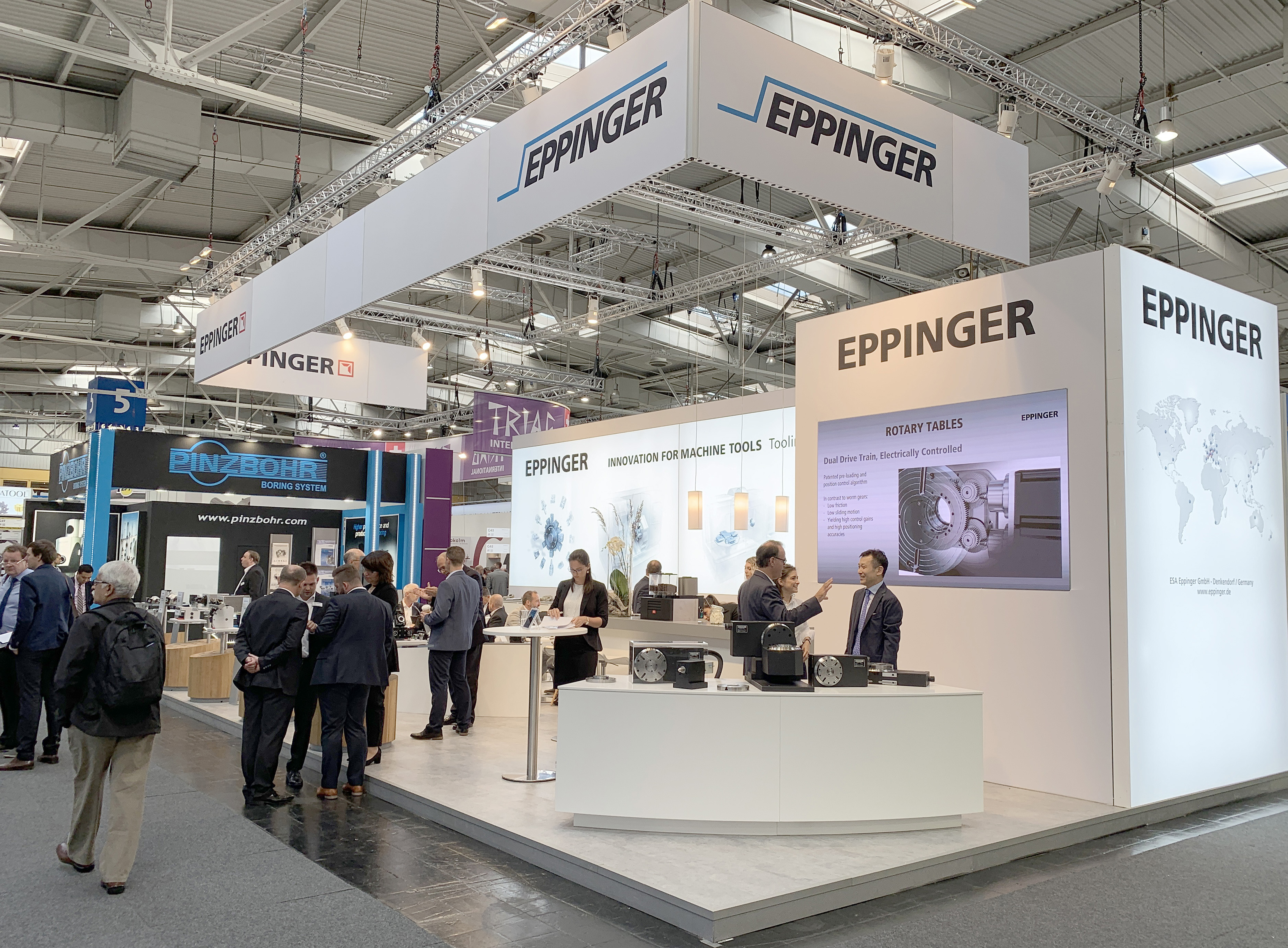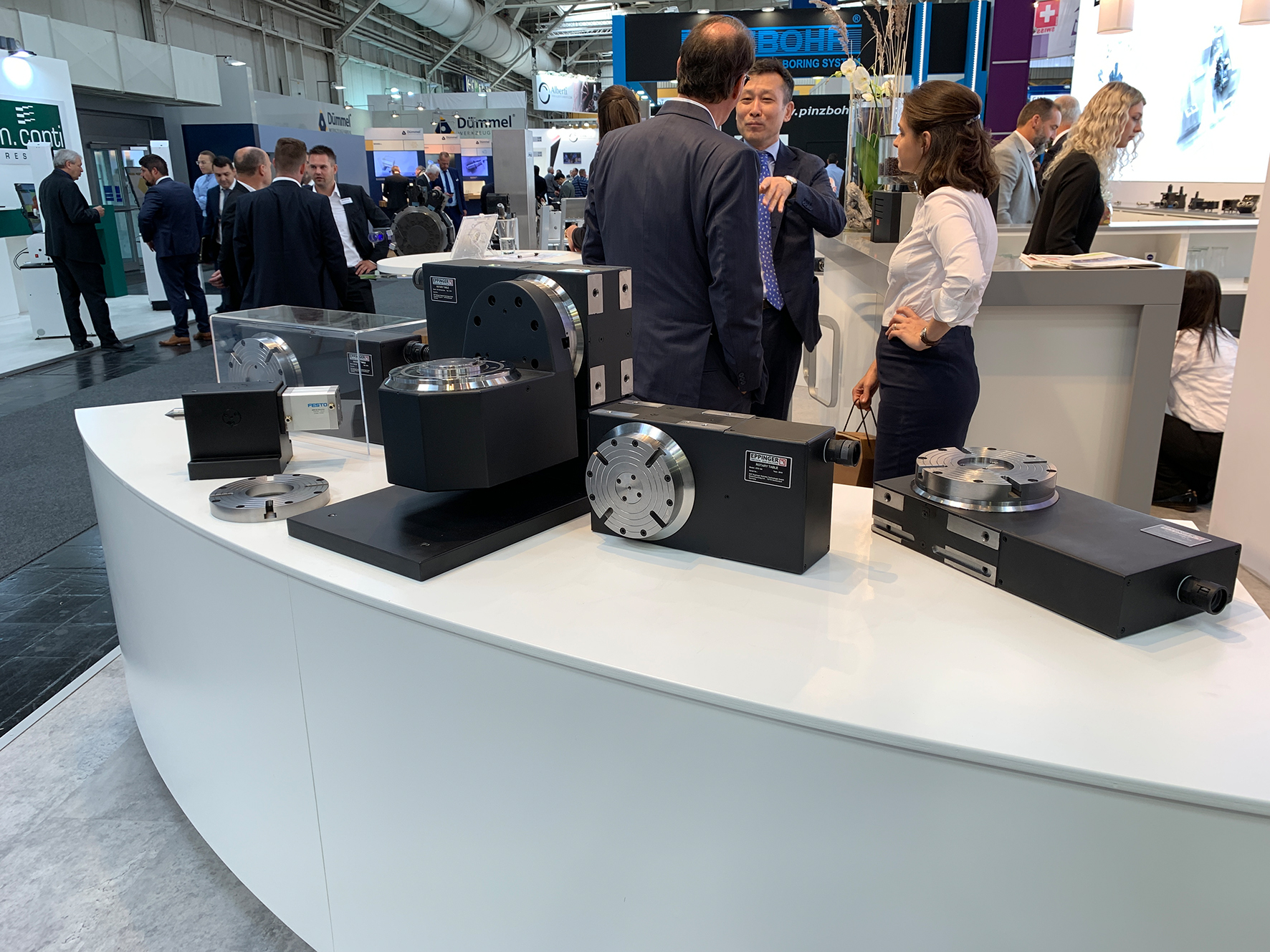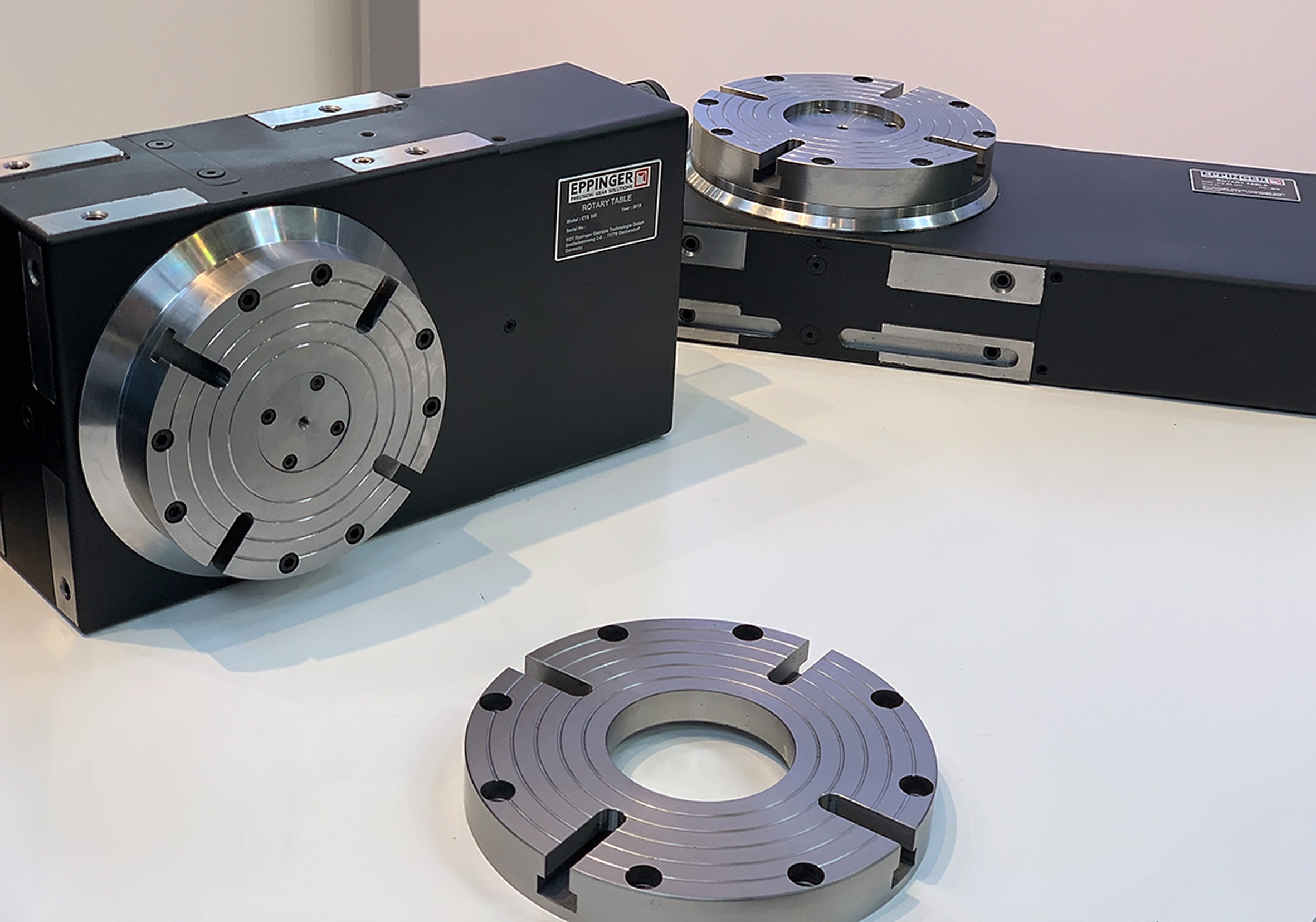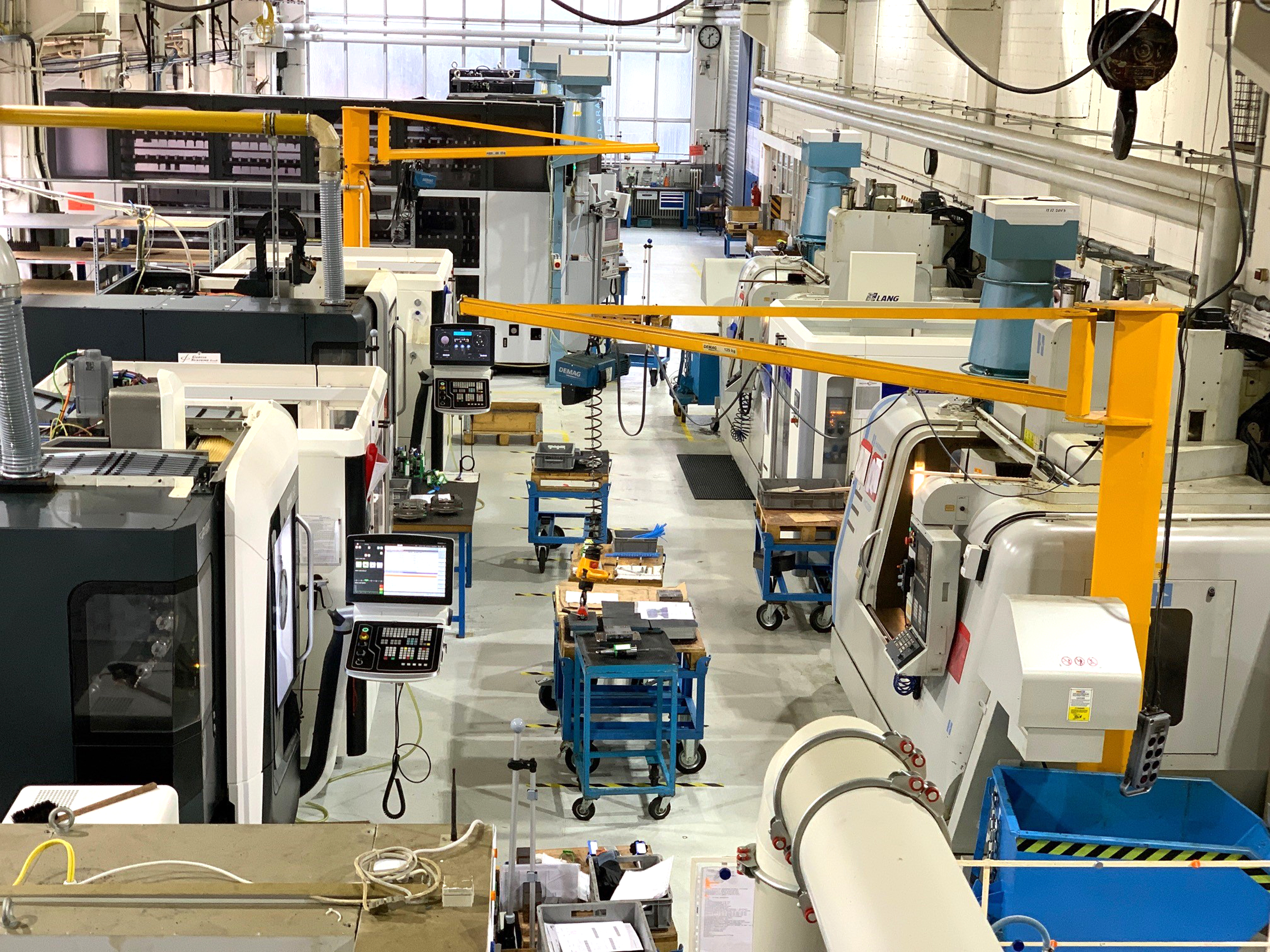Eppinger enters a new business sector: for the first time, the manufacturer of innovative tool systems and tool holders presented a range of rotary tables for machine tools at the EMO Hannover. The new rotary tables are available with rotary plate sizes from 160 mm to 320 mm and are suitable for both initial installation and retrofitting of vertical and horizontal milling machines.
“We have used more than 30 rotary tables of different brands at our production sites for many years,” says Managing Director Uwe Eppinger. That's why we are well aware of the pros and cons of installation, flexible application, maintenance costs and decreasing accuracy.”
The increasing degree of automation in the own production also requires a more compact design of the rotary tables which allows the use of suitable clamping devices without restricting the required travel distance of the machining axes too much.
Although the existing market is already highly competitive, Eppinger company is venturing into this segment now. “Our rotary tables differ significantly from existing solutions. They have been used for some time in our own manufacturing where they gradually replace the third-party products,” explains the Managing Director. “We were not always satisfied with the products previously existed on the market.”
The reason is that for our own production of tools, wheel gears and gear units we need the rotary tables that can be quickly and precisely positioned, which are extremely compact and suitable for fine grinding as
well as for rough milling operations. In addition, they should be easily integrated into existing vertical and horizontal machining centres and used there in a flexible way. “Since we could not find suitable rotary tables on
the market for our specific requirements in this specific combination, we developed them ourselves.”
The company was able to rely on its many years of experience in the design and manufacture of high-precision components for machine tools as well as in drive technology. "The high requirements to the positioning accuracy and compactness could only be achieved with a preloaded drive system and integrated angle measuring system. When developing the rotary tables, we thought very hard to come up with an absolute innovation on the market," emphasizes Uwe Eppinger.
The concept of rotary tables is coming up
And the concept seems to work. An essential distinguishing feature to other rotary tables is the preloaded, backlash-free twin-engine drive which allows quick indexing even without clamping. Furthermore, an integrated angle sensor on the rotary plate ensures the highest positioning accuracy even with changing loads. Although this principle is already used for larger rotary tables, Eppinger company found for the first time a more practicable solution to implement this also for rotary tables with rotary plate sizes from 160 mm to 320 mm. Although the angle measuring system integrated into the housing measures the angle directly on the rotary plate and compensates for mechanical interferences, the preloaded drive makes it possible to set up a high control loop gain. Only in this way it is possible to make the bidirectional positioning extremely precise in the angular seconds range.
To integrate into already existing machines, the company from Denkendorf relies on a plug-and-play concept. This applies both to the connection of the rotary tables within the processing area of the machine (via splash-proof plug connector) as well as to the electrical connection to the machine control system - via a specially developed machine interface unit. Thus, the rotary tables are suitable both for the initial installation as well as for the retrofitting of vertical and horizontal milling machines. When placing the rotary spindle, precision classes from 3 micrometre down to 1.5 microemtre in lapped or ground execution are available, both for radial and axial run-out.
An obvious benefit is the so-called multi-disc clamp which is installed as standard. It ensures a strong clamping at high machining forces, since it clamps the rotary plate directly. Apart from a high clamping torque, a high torsional rigidity is achieved which in turn ensures high surface qualities with changing cutting forces. "This aspect is often disregarded since high clamping torque does not mean high clamping rigidity at the same time," says Uwe Eppinger based on his experience.
The rotary plate can be exchanged precisely using a taper planar support with radial and axial change accuracies of 3 micrometre and more. As a result, workpieces from well-known manufacturers such as Hainbuch, Lang or Erowa can be precisely clamped over T-slots, short taper clamps or workpiece clamping systems. "In this case, we rely on a system similar to that of our proven tool holders with Prexi-Flex spindle interface." However, when using the rotary tables - in contrast to the Prexi-Flex interface - it is the planar support which is rigid and not the cone which stays flexible due to a machined groove. This guarantees a stable taper planar support where a very high change accuracy is achieved at the same time.
Flexible plates and simple installation
The production specialists from Denkendorf have also integrated an exchangeable plate system into the new rotary tables. Thus, the customer has the option right when placing an order or even later to choose whether he wants to have equipped the rotary table with rotary plate, plate with T-slots or with a spindle nose. The buyer can also decide whether he prefers a left-sided, right-sided or elevated rotary table: the rotary table can be easily turned due to its symmetrical housing shape. And finally, a problem-free installation of the rotary tables is ensured due to the specially developed plug-and-play connection concept. As the rotary tables are supplied with their own preconfigured axis controller, no additional axis controller or axis controller configuration by a service technician is required on the machine side during installation.
Maintenance friendly to the machine
The new rotary tables of Eppinger are also particularly easy to maintain. In contrast to the known solutions, clearance and wear are automatically compensated over the lifetime which considerably increases availability and service life of the product. Optionally one or more rotary axes can be connected to one machine with the innovative machine interface unit. If the rotary table is to be used on another machine, no reconfiguration of the machine control system is needed which reduces machine downtime and involvement of service technicians. Workpiece clamping systems and material feeding systems can be controlled via the machine interface unit without having to additionally activate M functions.

"We have developed a high-precision, extremely compact and flexible plug-and-play solution with our new rotary tables that will finally meet all the requirements of our production."


Re-invention of rotary tables: for the first time, Eppinger presented its new rotary table program at the EMO Hannover 2019 as a part of initial installation or for retrofitting vertical and horizontal milling machines.


The tool maker does not sell what he does not know: before the new rotary tables with rotary plate sizes from 160 mm to 320 mm were sold to the customers, Eppinger tested them first in-house.
Cheap Nike Air Max 2017 For Online Sale













